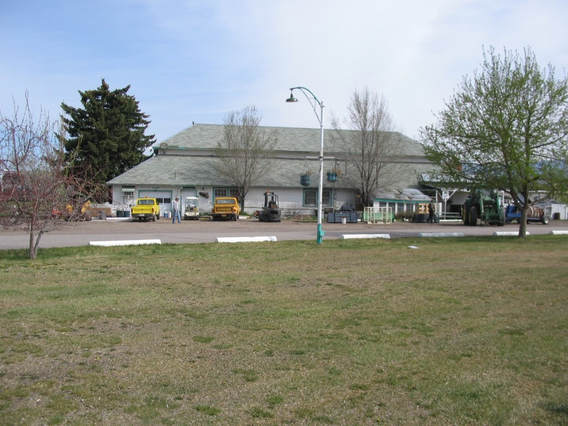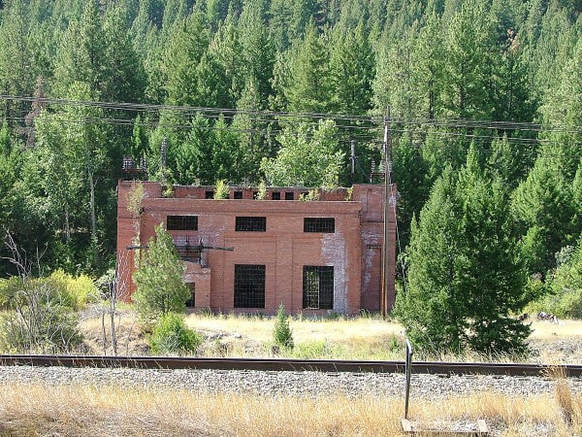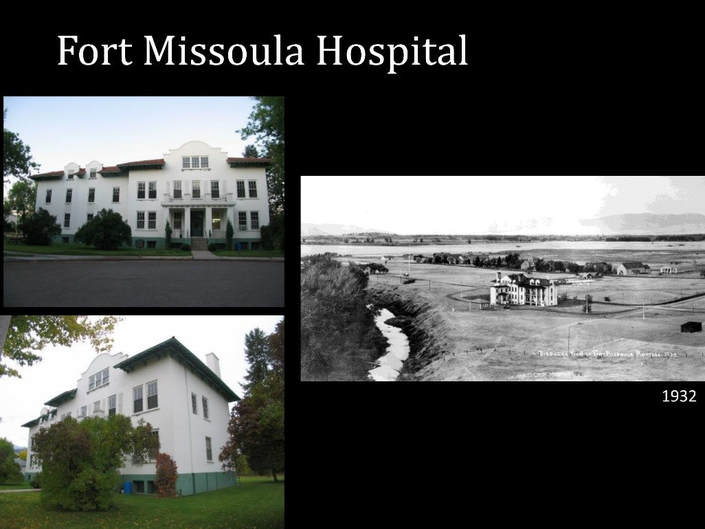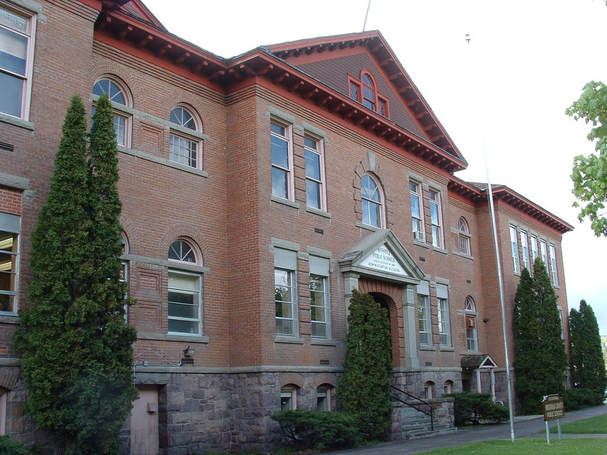2018 Most Endangered Historic Sites
PHM has published our 2018 list of most endangered historic sites. Read all about it in coverage by the Missoulian.
St Francis Catholic Church 411 S 5th Street, Hamilton, MT
This historic church was constructed in 1896 on land donated by Marcus Daly. The Queen Ann – Cape Cod style church was constructed for a cost of $5,000 and was originally under the charge of Missoula’s St. Francis Church. The Church is a contributing resource to the Hamilton Southside Residential Historic District and it is quite possibly individually eligible for listing on the National Register for its architectural values. The church will be demolished to clear space for construction of a new church. Preserve Historic Missoula received numerous nominations for this historic building and Preserve Historic Missoula supports the continued preservation of this community historic icon.
This historic church was constructed in 1896 on land donated by Marcus Daly. The Queen Ann – Cape Cod style church was constructed for a cost of $5,000 and was originally under the charge of Missoula’s St. Francis Church. The Church is a contributing resource to the Hamilton Southside Residential Historic District and it is quite possibly individually eligible for listing on the National Register for its architectural values. The church will be demolished to clear space for construction of a new church. Preserve Historic Missoula received numerous nominations for this historic building and Preserve Historic Missoula supports the continued preservation of this community historic icon.
Cold Springs School 2625 Briggs St, Missoula
The school house was constructed in 1930, and it is not currently listed on the National Register of Historic Places. Cold Springs School was part of Preserve Historic Missoula’s 2008 and 2009 Endangered Historic Sites list which included all of Missoula’s historic schools. A new school to serve the Miller Creek area is currently being constructed. The future of the historic school building is not known, but possibly includes demolition which greatly concerns the neighborhood. The building is owned by Missoula County Public Schools. Preserve Historic Missoula supports the neighborhood desires to see the building adaptively reused for community activities.
The school house was constructed in 1930, and it is not currently listed on the National Register of Historic Places. Cold Springs School was part of Preserve Historic Missoula’s 2008 and 2009 Endangered Historic Sites list which included all of Missoula’s historic schools. A new school to serve the Miller Creek area is currently being constructed. The future of the historic school building is not known, but possibly includes demolition which greatly concerns the neighborhood. The building is owned by Missoula County Public Schools. Preserve Historic Missoula supports the neighborhood desires to see the building adaptively reused for community activities.
LaLonde Ranch 5404 West Harrier Drive, Missoula
The Lalonde Ranch is one of the oldest ranches in the Missoula Valley, dating back to 1877 when Adam Lalonde filed a homestead entry on 160 acres west of Missoula. He constructed a log cabin, believed to be still standing that he and his wife Lucy lived while the main house was being built. The main house, believed to have been constructed in 1888 with bricks from the Hollenbeck Brickyard, a local brickyard near the present day airport. Due to the low temperature of firing the bricks and the high clay content of the material, few structures remain which were built from local Missoula bricks.
The property has been determined to be eligible for listing on the National Register of Historic Places by consensus determination under Criteria A and C. The Montana State Historic Preservation Office notes that only 4 buildings remain of the 9 that were present at the time of the eligibility determination. Missoula County is currently studying options for the future development of the property. Hopefully, finding a use that is compatible with the historic site will result from the study. It is also possible that listing on Preserve Historic Missoula’s Most Endangered Historic Sites list will generate a possible solution for the future of this historic ranch.
The Lalonde Ranch is one of the oldest ranches in the Missoula Valley, dating back to 1877 when Adam Lalonde filed a homestead entry on 160 acres west of Missoula. He constructed a log cabin, believed to be still standing that he and his wife Lucy lived while the main house was being built. The main house, believed to have been constructed in 1888 with bricks from the Hollenbeck Brickyard, a local brickyard near the present day airport. Due to the low temperature of firing the bricks and the high clay content of the material, few structures remain which were built from local Missoula bricks.
The property has been determined to be eligible for listing on the National Register of Historic Places by consensus determination under Criteria A and C. The Montana State Historic Preservation Office notes that only 4 buildings remain of the 9 that were present at the time of the eligibility determination. Missoula County is currently studying options for the future development of the property. Hopefully, finding a use that is compatible with the historic site will result from the study. It is also possible that listing on Preserve Historic Missoula’s Most Endangered Historic Sites list will generate a possible solution for the future of this historic ranch.
The US Forest Service Radio Communications Building Whittaker Park, Missoula
The building is owned by the City of Missoula Parks and Recreation Department. The building was constructed in the early 1930’s as a central location for US Forest Service radio communications for fire operations for Montana and Idaho forests. It was the first Forest Service radio communications building in Missoula. The building is not listed on the National Register of Historic Places. The building is currently slated for demolition. PHM would encourage any and all possibly adaptive reuses of this historic building.
The building is owned by the City of Missoula Parks and Recreation Department. The building was constructed in the early 1930’s as a central location for US Forest Service radio communications for fire operations for Montana and Idaho forests. It was the first Forest Service radio communications building in Missoula. The building is not listed on the National Register of Historic Places. The building is currently slated for demolition. PHM would encourage any and all possibly adaptive reuses of this historic building.
Howard’s Apartments 145 W. Main Street, Missoula
This three story commercial building was constructed circa 1890, the main floor is commercial while the upper floors are apartments, the building exhibits some Tudor architectural elements. The building is a contributing resource to the Missoula Downtown Historic District. The building’s foundation, roof, and fire escapes are in need of maintenance and upgrades. Hopefully listing this historic building on the Endangered Historic Sites list will showcase the difficulties in upgrading and maintaining historic buildings.
This three story commercial building was constructed circa 1890, the main floor is commercial while the upper floors are apartments, the building exhibits some Tudor architectural elements. The building is a contributing resource to the Missoula Downtown Historic District. The building’s foundation, roof, and fire escapes are in need of maintenance and upgrades. Hopefully listing this historic building on the Endangered Historic Sites list will showcase the difficulties in upgrading and maintaining historic buildings.
Maintenance Building Missoula County Fairgrounds
This structure was constructed by the Works Progress Administration in 1940 and it is a contributing building to the Missoula County Fairgrounds Historic District. The early development of the fairgrounds is represented by three remaining structures. The Commercial Building and the Culinary Arts Building are the only two Ole Bakke-designed buildings remaining. The WPA Maintenance building is the third structure that remains on site to represent the early development period of the fair’s history. The Maintenance Shop is a contributing building to the historic district, an argument can be made that the building could be individually eligible for listing on the National Register for its association with the WPA. The building is slated for demolition. Preserve Historic Missoula is asking the public for possible adaptive reuses of this historic building at the fairgrounds. Missoula County is currently asking for public comment on the future of the fairgrounds and we hope that someone may have the solution to the adaptive reuse of this historic building.
This structure was constructed by the Works Progress Administration in 1940 and it is a contributing building to the Missoula County Fairgrounds Historic District. The early development of the fairgrounds is represented by three remaining structures. The Commercial Building and the Culinary Arts Building are the only two Ole Bakke-designed buildings remaining. The WPA Maintenance building is the third structure that remains on site to represent the early development period of the fair’s history. The Maintenance Shop is a contributing building to the historic district, an argument can be made that the building could be individually eligible for listing on the National Register for its association with the WPA. The building is slated for demolition. Preserve Historic Missoula is asking the public for possible adaptive reuses of this historic building at the fairgrounds. Missoula County is currently asking for public comment on the future of the fairgrounds and we hope that someone may have the solution to the adaptive reuse of this historic building.
Buildings 14 and 16, NCO Quarters Fort Missoula
These two buildings are contributing resources to the Fort Missoula Historic District and they were placed on the 2009 PHM Endangered Historic Sites List. These two structures were constructed in 1910 and originally served as living quarters for the Non-Commissioned Officers stationed at Fort Missoula. The two duplex buildings are contributing buildings to the Fort Missoula Historic District. They are two-and-one-half story residential stucco structures with full-length porches running along the front and back, and they mimic the Mission style of architecture prevalent at Fort Missoula. Preserve Historic Missoula would like to encourage the University of Montana to adaptively reuse these historic buildings.
These two buildings are contributing resources to the Fort Missoula Historic District and they were placed on the 2009 PHM Endangered Historic Sites List. These two structures were constructed in 1910 and originally served as living quarters for the Non-Commissioned Officers stationed at Fort Missoula. The two duplex buildings are contributing buildings to the Fort Missoula Historic District. They are two-and-one-half story residential stucco structures with full-length porches running along the front and back, and they mimic the Mission style of architecture prevalent at Fort Missoula. Preserve Historic Missoula would like to encourage the University of Montana to adaptively reuse these historic buildings.
The Ravenna Substation #9
Constructed by the Chicago, Milwaukee, St. Paul & Pacific railroad around 1910, was part of a series of substations that converted the 110,000 volt AAC to 3,000 volts DC which powered the roads electric engines. The Chicago, Milwaukee, St. Paul and Pacific Railroad was one of the three transcontinental railroads to cross Montana. The Ravenna Substation #9 was one of thirteen substations built along the length of the Milwaukee Road between Harlowton, Montana and Avery, Idaho, a distance of 438 miles. It is one of only four substations remaining in Montana. The substations were designed by company architects and followed a standard design that was utilized across Montana, Idaho, and Washington. The Milwaukee road ended electric operations in 1974 and abandoned the line in 1980. The Ravenna Substation is not listed on the National Register of Historic Places. Preserve Historic Missoula would support any possible adaptive reuse of the historic building.
Constructed by the Chicago, Milwaukee, St. Paul & Pacific railroad around 1910, was part of a series of substations that converted the 110,000 volt AAC to 3,000 volts DC which powered the roads electric engines. The Chicago, Milwaukee, St. Paul and Pacific Railroad was one of the three transcontinental railroads to cross Montana. The Ravenna Substation #9 was one of thirteen substations built along the length of the Milwaukee Road between Harlowton, Montana and Avery, Idaho, a distance of 438 miles. It is one of only four substations remaining in Montana. The substations were designed by company architects and followed a standard design that was utilized across Montana, Idaho, and Washington. The Milwaukee road ended electric operations in 1974 and abandoned the line in 1980. The Ravenna Substation is not listed on the National Register of Historic Places. Preserve Historic Missoula would support any possible adaptive reuse of the historic building.
Sussex School (the original building) 1800 South Second Street, Missoula
The historic residence was former Montana Governor Frank Cooney’s home. Sussex School purchased the building and 2.5 acres in 1980. Cooney was elected lieutenant governor in 1932, and in March 1933 he assumed the duties of Governor. John Erickson, the previous Governor resigned to take Thomas Walsh’s Senate seat. The building is not listed on the National Register of Historic Places and it is not a contributing resource to a historic district.
The Sussex School is contemplating a National Register of Historic Places nomination, the school administration has concerns about property restrictions, federal and state rules and regulations and the financial costs associated with a National Register nomination. Their concerns should be part of a community discussion. Placing this historic school on the Endangered List will help highlight how a property is placed on the National Register of Historic Places and will hopefully showcase that property owners are not encumbered by the listing.
The historic residence was former Montana Governor Frank Cooney’s home. Sussex School purchased the building and 2.5 acres in 1980. Cooney was elected lieutenant governor in 1932, and in March 1933 he assumed the duties of Governor. John Erickson, the previous Governor resigned to take Thomas Walsh’s Senate seat. The building is not listed on the National Register of Historic Places and it is not a contributing resource to a historic district.
The Sussex School is contemplating a National Register of Historic Places nomination, the school administration has concerns about property restrictions, federal and state rules and regulations and the financial costs associated with a National Register nomination. Their concerns should be part of a community discussion. Placing this historic school on the Endangered List will help highlight how a property is placed on the National Register of Historic Places and will hopefully showcase that property owners are not encumbered by the listing.
Fort Missoula Hospital Building 9, Fort Missoula
The post hospital, constructed in 1911, is a 3 ½ story Mission Style building, with red slate roof tiles, high plain adobe walls, and bracketed eaves. The hospital treated a wide variety of diseases and injuries over the years including a large breakout of Spanish influenza in 1918. An outbreak of polio in children at the Fort was treated from 1934 to 1935. The building sustained damage during a fire in 1941, but was repaired a few years later and was used as the main hospital for the Alien Detention Camp. The hospital was deactivated in 1947, and sat empty until 1962.
The property also includes two other historic buildings that are also contributing resources to the Fort Missoula Historic District. Building 11 is a garage, built in 1938 by the Civilian Conservation Corps. Building 12 is a one story residence, constructed in 1938 by the Civilian Conservation Corps for housing for the hospital nurses. The building is owned by the Western Montana Mental Health Center and it is currently for sale. The Post Hospital was on the 2008 Endangered Historic Sites List due to problems with a leaking roof and the daunting repair efforts. Preserve Historic Missoula would support the efforts of the Northern Rockies Heritage Center to acquire the preserve the historic hospital and the two associated buildings as part of their larger efforts to preserve the campus of Fort Missoula.
The post hospital, constructed in 1911, is a 3 ½ story Mission Style building, with red slate roof tiles, high plain adobe walls, and bracketed eaves. The hospital treated a wide variety of diseases and injuries over the years including a large breakout of Spanish influenza in 1918. An outbreak of polio in children at the Fort was treated from 1934 to 1935. The building sustained damage during a fire in 1941, but was repaired a few years later and was used as the main hospital for the Alien Detention Camp. The hospital was deactivated in 1947, and sat empty until 1962.
The property also includes two other historic buildings that are also contributing resources to the Fort Missoula Historic District. Building 11 is a garage, built in 1938 by the Civilian Conservation Corps. Building 12 is a one story residence, constructed in 1938 by the Civilian Conservation Corps for housing for the hospital nurses. The building is owned by the Western Montana Mental Health Center and it is currently for sale. The Post Hospital was on the 2008 Endangered Historic Sites List due to problems with a leaking roof and the daunting repair efforts. Preserve Historic Missoula would support the efforts of the Northern Rockies Heritage Center to acquire the preserve the historic hospital and the two associated buildings as part of their larger efforts to preserve the campus of Fort Missoula.
Missoula County Public School Administration Building, 215 S. 6th Street, Missoula
Owned by Missoula County Public Schools. This historic building has been on all of our previous Endangered Historic Sites lists. Missoula’s public school buildings reflect the establishment of public school education in the community and the development of Missoula’s educational system in the 20th Century. PHM can encourage rehabilitation of buildings for educational use as well as urge deed restrictions on school building sales to prevent their demolition or their conversion to properties that do not reflect their historical significance.
Owned by Missoula County Public Schools. This historic building has been on all of our previous Endangered Historic Sites lists. Missoula’s public school buildings reflect the establishment of public school education in the community and the development of Missoula’s educational system in the 20th Century. PHM can encourage rehabilitation of buildings for educational use as well as urge deed restrictions on school building sales to prevent their demolition or their conversion to properties that do not reflect their historical significance.











